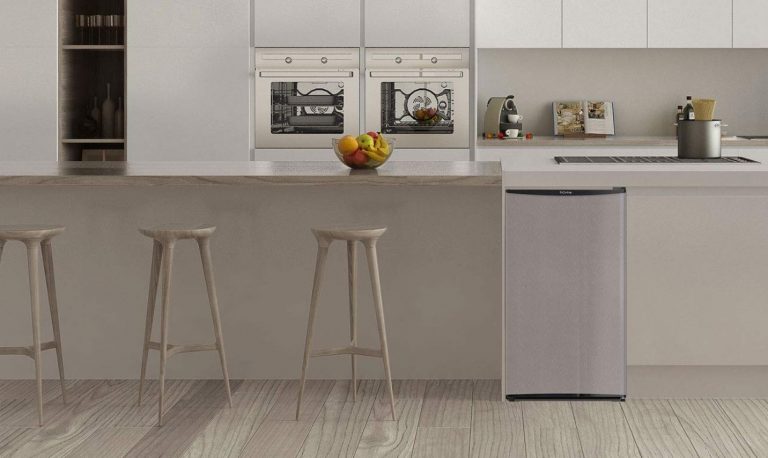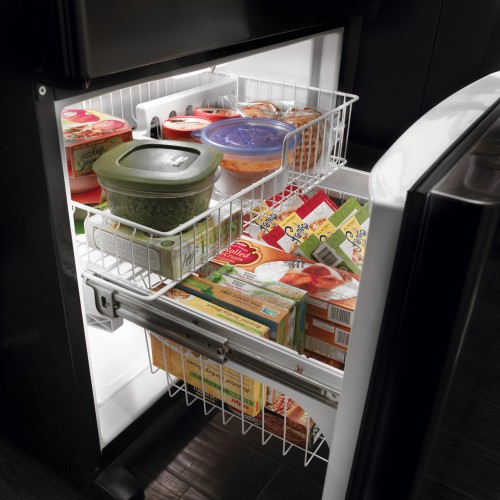How much battery power is needed to run a 350 liters fridge for 10 hours?
Many factors affect the power consumption of a refrigerator. So while we could calculate a value that specifically answers this question, it will only be approximated. To truly get an accurate answer, you need to consider the multiple factors that affect a refrigerator’s energy consumption.
Modern refrigerators are now extremely energy efficient, with inverter fridges being incredibly efficient.
When determining your refrigerator unit’s energy efficiency, an effortless way is to check its star rating. This is a standard means of classification, with a one-star rating being the lowest and a five-star rating the highest.
If you’re looking to run a fridge on a generator check this out!
What factors affect a fridge’s energy efficiency?
- Age: How long have you owned this fridge? From which era did it come from? The older the fridge, the less energy efficient it is. If you compare two fridges of the same model and same star ratings, but with one fridge being in use for a few years and the other being brand new, the used fridge will be a lot less energy efficient.
- Compressor cycles: The compressor is the component that kickstarts the refrigeration process, and so, you can consider it as the actual machine that powers the fridge. The compression type and rating affect the energy efficiency of the fridge.
- Frequency of opening: If the refrigerator is opened and used frequently throughout the day, the compressor will need to work harder to preserve and maintain the system’s temperature. Thus, it is less energy-efficient and consumes more power.
- Climate and weather: Refrigerators work relative to their surroundings. They don’t operate in a vacuum. If the climate or weather is hotter, the compressor needs to work harder to compensate for the hot surroundings. As a fridge cools by basically removing all the “hot,” the more “hot” there is, the more work the system needs to do.
- Thermostat temperature setting: The lower the temperature you have set your fridge to maintain, the harder the compressor will maintain that temperature setting.
How many batteries to run a refrigerator
The number of batteries required to run a refrigerator depends on the power consumption of the refrigerator and the capacity of the batteries. A typical domestic refrigerator can consume between 150 and 600 watts of power.
To run a refrigerator using batteries, a deep cycle battery or a bank of batteries is needed. The capacity of the battery bank should be large enough to store sufficient energy to power the refrigerator for a certain period of time, such as overnight or during a power outage.
The number of batteries required will depend on the capacity of each battery and the amount of time that the refrigerator needs to run. A rough estimate is that you would need around 400Ah to 800Ah of capacity to run a refrigerator for 24 hours.
Keep in mind that this is a rough estimate and actual requirements will vary depending on the specific refrigerator, the power consumption, and the capacity of the battery.
How to calculate fridge power consumption
METHOD ONE USING WATTAGE RATING
Step 1: Determine the wattage of your refrigerator.
This can typically be found at the back of your fridge in the compliance plate. The wattage heavily varies depending on the brand, the compressor that was used, and so on. If the compliance plate doesn’t identify the wattage, you can also compute it by multiplying the voltage (V) and amps (A) specified in the plate.
A 350L fridge with a 3-star energy efficiency rating typically uses a wattage of 130W.
Step 2: Determine the number of hours that the refrigerator is used.
A refrigerator only consumed power if the compressor is running and when the inside light fixtures are turned off. This means that even if a refrigerator is plugged in for 24 hours, it will not be consuming energy for this period. A safe assumption to make is 8 – 10 hours, which is also the period of time that you are asking this question.
Step 3: Multiply the value from Step 1 (wattage) and Step 2 (hours of usage).
This will give you the daily energy consumption of your refrigerator.
In this case, the value from step 1 = 130W.
The value from step 2 = 8hours and 10 hours
130W x 8 hours = 1040 Wh/day or 1.04 kWh/day
130W x 10 hours = 1300 Wh/day or 1.3kWh/day
For 8-10 hours, a 350L refrigerator with a 3-star rating would consume 1.04 – 1.3 kWh/day.
METHOD TWO USING POWER CONSUMPTION RATING
Step 1: In some instances, you won’t determine the wattage from the compliance plate. Even determining the voltage and current rating to calculate the wattage won’t be an option. Instead, the power consumption is provided. This is usually identified using the label kWh/year.
The Hisense Top Mount Frost Free Fridge has a capacity of 350L, and a star rating of 3 has a power consumption of 380/yr.
Step 2: Divide the value you got from step 1 (kWh/year) by 365 to determine the refrigerator unit’s energy consumption in a day.
That would give us 1.04 kWh/day.
Power consumption of a mini fridge
The power consumption of a mini fridge can vary depending on the make and model, as well as the size of the unit. On average, a mini fridge will consume between 100 and 150 watts of power. A mini fridge with a freezer will typically consume more power than one without a freezer.
Additionally, the power consumption of the mini fridge will increase when the compressor is running, and decrease when the unit is in the standby mode. A good way to know the power consumption of a specific model is to check the Energy Star label that should be on the fridge or the manual.
How to power a refrigerator using a battery
Step 1: Let’s use the value we got from the second method from here on out (1.04 kWh/day). This would be for a 24-hour basis, but since we’re calculating for 8-10 hours only, we’re looking at a wattage of 172-240 for the refrigerator.
Step 2: The inverter to be used with the battery has an assigned 80% efficiency. Meaning that if it takes 100 watts for the DC power, it will return 80 watts of AC power.
Step 3: Considering a Factor of Safety at least 2, we’re left with 350-480 watts for the refrigerator.
Step 4: That means that if the voltage rating of the refrigerator is 110V, you need a current rating of 3.2A-4.4A. For a 220V fridge, you need a current rating of 1.75A-2.4A.
For a 12V inverter, then you’ll need a battery with a current rating of 30Ah to 40 Ah. For a 24V inverter, the current ratings would be halved to 15Ah to 20Ah.






